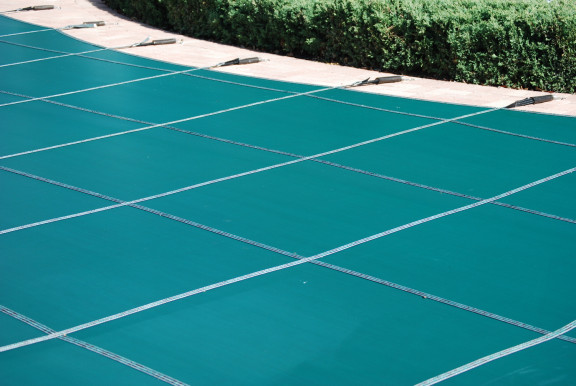Pool enclosure standards: which rules and regulations should be taken into account?
You have to comply with specific safety standards and urban planning rules and regulations when installing a pool enclosure. Which standard ensures you can make the most of your pool in total safety? Do you need a building permit to install a pool enclosure? Here's everything you need to know before creating an enclosure around your pool.
NF P90-309: focus on the safety standard for pool enclosures
Inaccessible to young children
The NF P90-309 standard has been applicable since 2006 to verandas and light structures used as pool enclosures, whether they're made of aluminium, wood, PVC or polycarbonate. The aim of this safety standard is to ensure swimming pools are safe, to prevent drowning. The sides of the enclosure must be high enough so that a child cannot climb over them. Irrespective of whether the enclosure is fixed or retractable and features several modules, the access to the covered pool must also be locked with complicated lock systems that are inaccessible to young children, i.e. either at a height of over 1.60 metres from the ground, or because they require two different actions to open the enclosure. A pool enclosure, much more effective than a simple removable pool cover, is the most effective safety solution.
Wind-resistant
The structure and the polycarbonate or glass glazing must be able to withstand violent winds to protect the pool well. The NF P90-309 standard requires them to resist winds of up to 100 km/h.
Snow-resistant
The panels and roof of a pool enclosure located in a garden, on a terrace or leaning against a home must also be able to resist bad weather all year round, in particular during wintering. Pool enclosures that comply with French standards resist a snow load of 45 kg per square metre.
Compliance testing
To ensure that a pool cover meets all these requirements, even if it has been made to measure, tests are performed on the materials of at least 3 parts of the structure, including 2 consecutive tests.

Installing a pool enclosure: what urban planning standards should be taken into account?
A pool enclosure without any formalities
Just like with some terrace enclosures, garden sheds and enclosures, formalities are based on the height of the structure and the floor surface area. If you wish to install a pool or spa enclosure that's less than 1m80 high, on an existing pool or on one being built with a surface area of less than or equal to 10 square metres, then no declaration is required. A low pool enclosure, which also has the advantage of being discreet, or a small stylish dome as an enclosure for a spa, are to be favoured if you wish to avoid administrative formalities.
Declaration of works: in which cases?
A prior declaration of works is required for all types of pool enclosures that are higher than 1m80; as well as for enclosures that are less than 1m80 if a pool is being built with a surface area of between 10 and 100 square metres, and for its enclosure at the same time.
A building permit for large-sized structures
You will only need a building permit for a pool enclosure if you build a pool and an enclosure, and the pool has a footprint of more than 100 square metres.
Being supported by a professional for your formalities
These rules and regulations may vary based on the local urban planning code. For the tax office, your full-height pool enclosure may be subject to development tax, which should be taken into account in your budget. For Mathieu Joulé-Charpentier, Abrisud Sales Director, it's"essential to have an urban planning department in the company to fully manage customers' cases, and all the more so as rules and regulations applied to pool enclosures are different from one municipality to another, and from one building area to another."


